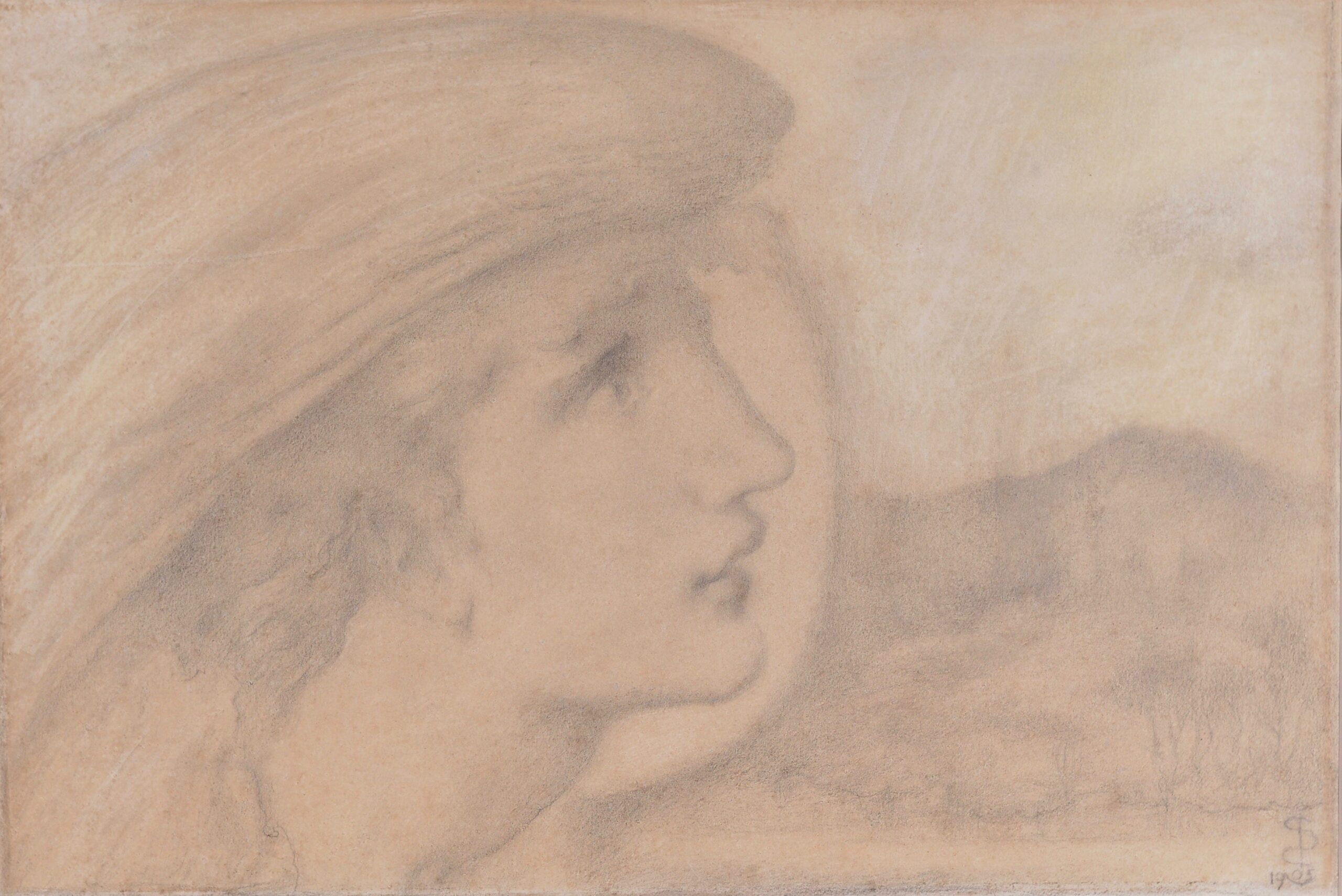SIMEON SOLOMON 1840-1905
For all enquiries please contact us

Love
Pencil and chalk
Monogrammed and dated 1905
35.6 x 52.1cm
£12,000
Provenance:
J. R. Lamantia
Exhibited:
Durlacher Bros., Madison Avenue and Wellesley College, 'Simeon Solomon Exhibition', April & May 1966, no 19
Literature:
Exhibition of Paintings and Drawings by Simeon Solomon, Durlacher Bros., April 1966, no 19
This drawing dates from the year Solomon died, of bronchitis and alchoholism, in August 1905, making this one of his last known drawings. The subject may relate to Solomon's prose poem 'A Vision of Love Revealed in Sleep' (1871), wherein the narrator is guided by his soul through a dreamscape and encounters visions of Love - 'forsaken and shamed, wounded and forgotten; of guileless and soulless pleasure in its naked and melodious maidenhood [...] of death and silence, and of sleep and time'. (Swinburne's review, The Dark Blue, 1871) Though varied, every manifestation of Love took male form, winged, with a radiance, or glow about the head. Despite Victorian strictures, its displacement of homosexual love to the shadowy borders of nocturnal London, Solomon created a condition for poetic and artistic refuge: the veil of night.
This late pencil drawing is similar to others related to the poem, such as 'A Vision of Wounded Love' (1893)

Simeon Solomon was born into a middle-class Jewish family in London, England on 9 October 1840, the youngest of the eight children of Meyer Solomon and Katherine (née Levy), an amateur miniature painter. Raised in Bishopsgate, he was tutored by his sister, Rebecca (1832-1886), herself a gifted artist and a regular RA exhibitor, employed as a copyist and drapery painter by John Everett Millais. Simeon also trained at F. S. Cary’s Academy (1852-56), and in the studio of his elder brother Abraham (1824-1862), who he followed to the Royal Academy Schools (1856–60). He made his exhibition debut at the Royal Academy in 1858, where he continued to show regularly until 1872. Two years later, his oil painting, Moses (Private Collection, New York), aroused controversy but was defended by the novelist William Makepeace Thackeray. Solomon’s earliest works, mostly on Old Testament subjects, were inspired by Jewish culture and tradition, the bible and Shakespeare. Around 1858, he was introduced to Gabriel Rossetti and became a member of the Pre-Raphaelite circle, later meeting Edward Burne-Jones, John Everett Millais, and William Holman Hunt. In 1862 he established his own studio and was influenced by the poet and critic Algernon Charles Swinburne, and the ideals of the Aesthetic movement. In the following decade, he regularly exhibited at the progressive Dudley Gallery in London and was elected a member of the Savile Club.
In 1873, however, Solomon was arrested in a public lavatory, convicted of gross indecency, and sentenced to 18 months imprisonment (subsequently suspended). Following a brief stay in a lunatic asylum and without consistent support, he drifted into alcoholism, living on charity and a meagre living from reproductions of his work, spending years in the St Giles Workhouse, Holborn, in London, where he died of a heart attack on 14 August 1905. Two memorial exhibitions were held in 1906 and in 2005-06 Birmingham Museum & Art Gallery curated the exhibition 'Love Revealed: Simeon Solomon and the Pre-Raphaelites', the first full-scale survey of his work, which toured to Ben Uri Gallery in London and to Museum Villa Stuck, Munich.